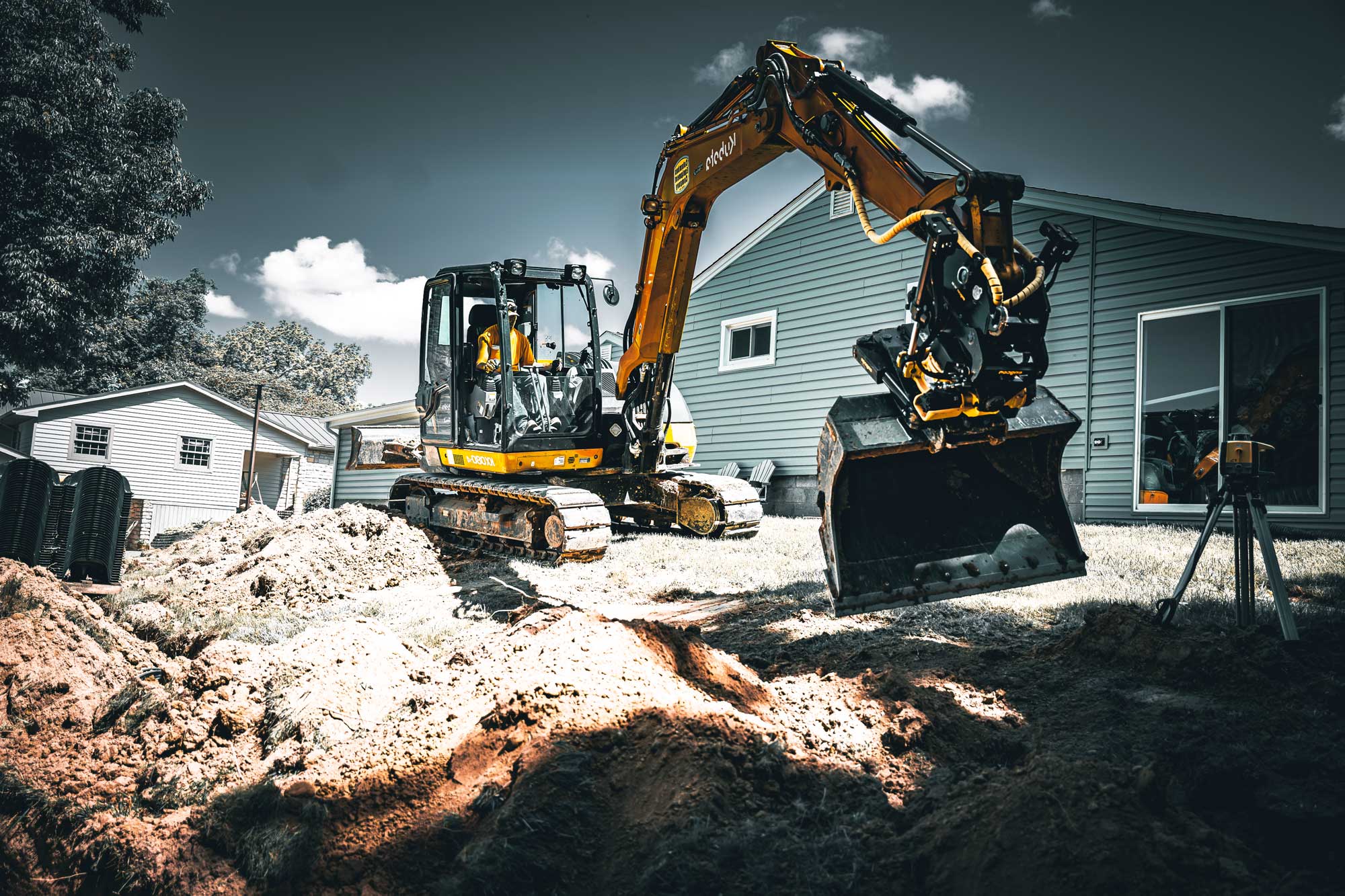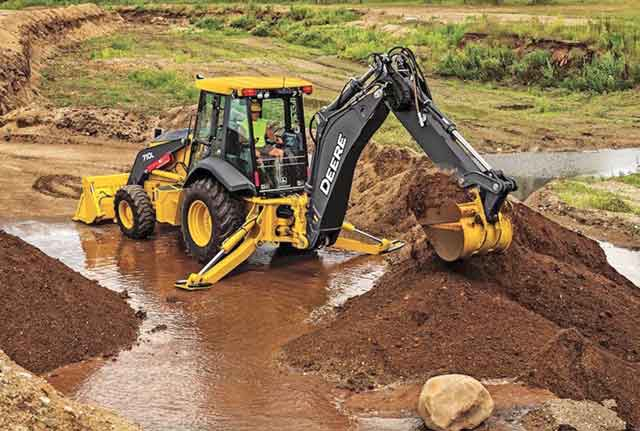Lancaster Trenching - Professional Trenching Solutions in Lancaster, Ohio
Lancaster Trenching - Professional Trenching Solutions in Lancaster, Ohio
Blog Article
Unveiling the Art of Excavation: Pro Tips for Safe and Efficient Excavating
In the world of excavation, the proficiency of risk-free and effective digging is an art form that requires understanding, adherence, and accuracy to recognized methods. As dirt is transformed and planet is moved, the details of excavation disclose themselves, requiring an eager understanding of equipment, soil structure, safety methods, and ecological considerations. The experience required to browse these components properly can suggest the difference in between a successful excavation task and a potential catastrophe. By deciphering the layers of this detailed process, a world of methods and insights awaits those looking for to elevate their excavation skills to brand-new elevations.
Relevance of Correct Equipment
To make certain the safety and effectiveness of any kind of excavation job, using the ideal devices is vital. Excavation jobs vary in scope and intricacy, varying from little residential landscape design jobs to large construction endeavors.
These functional devices come in numerous dimensions to suit different project demands. Small excavators are optimal for smaller jobs, while larger excavators deal with more comprehensive jobs efficiently.
In addition to excavators, various other essential devices includes dump plates, trucks, and bulldozers. Dump vehicles are important for removing and moving excavated materials, while trenchers are used for excavating narrow and deep trenches. Excavators master tasks that require pushing large quantities of dirt or particles. By investing in the ideal equipment, excavation projects can be finished securely, on time, and with precision.
Understanding Dirt Composition
A thorough understanding of dirt structure is essential for implementing excavation projects with accuracy and security. Recognizing the different kinds of soil is important as it directly impacts excavation techniques, devices selection, and general task effectiveness.
Sand fragments are the biggest and offer excellent drain but provide little communication. Silt fragments are smaller sized than sand however larger than clay, supplying moderate drain and cohesion. Clay bits are the tiniest and offer high cohesion yet inadequate water drainage. Raw material, such as rotting plant material, affects dirt fertility and stability.
Before beginning excavation, conducting dirt tests to determine its make-up and attributes is essential. This details assists in selecting the ideal devices, executing security measures, and establishing excavation methods tailored to the specific soil conditions - dump truck companies in ohio. By comprehending soil structure, excavation professionals can boost project end results while guaranteeing safety and security and adherence to finest techniques
Precaution and Methods
Comprehending dirt structure is the keystone upon which safety and security steps and methods for excavation jobs are constructed, guaranteeing the health of workers and the success of the undertaking. There are numerous key procedures that must be carried out to minimize risks and avoid mishaps. when it comes to security throughout excavation.
Firstly, before any kind of excavating begins, a complete assessment of the website need to be performed to recognize any kind of potential threats such as underground utilities, unpredictable soil conditions, or neighboring frameworks that could pose a danger. It is vital to have a skilled person manage the excavation process to make sure that all safety and security methods are adhered to purely.
Moreover, all employees involved in the excavation should be effectively trained in safe excavating practices and the appropriate procedure of tools. Personal protective tools (PPE) such as construction hats, high presence clothing, handwear covers, and safety boots must be put on whatsoever times to lessen the threat of injuries. dump truck companies in ohio. Normal safety conferences and tool kit talks should also be carried out to keep all workers notified about prospective dangers and strengthen secure job techniques. By sticking to these safety procedures and procedures, excavation jobs can be finished effectively and without occurrence.
Reliable Excavation Planning
When embarking on an excavation project, meticulous planning is vital to make certain efficiency, safety, and effective outcomes. Effective excavation planning entails several crucial steps that are critical for the smooth execution of the task.
When the website evaluation is full, the next step is to create a clear timeline and timetable for the excavation activities. This includes identifying the series of jobs, equipment demands, and workforce allotment. Correct scheduling helps prevent hold-ups and makes sure that the task remains on track.

Furthermore, interaction amongst all staff member is paramount during the planning phase. Clear directives, regular updates, and efficient control are crucial for an effective excavation task. By spending effort and time in thorough preparation, excavation teams can substantially improve efficiency, lessen dangers, and accomplish successful end results.

Handling Ecological Considerations
With enhancing emphasis on ecological sustainability in building practices, taking care of ecological find more factors to consider has actually ended up being an essential aspect of excavation projects. Excavation tasks have the prospective to affect the surrounding atmosphere through dirt erosion, sediment drainage, habitat interruption, and contamination of water sources. To alleviate these risks, it is vital to apply finest techniques that focus on ecological defense.

In addition, proper waste management is essential to stop soil and water contamination. Carrying out procedures for the disposal of dangerous products, recycling of waste products, and lessening the usage of dangerous chemicals can dramatically lower the ecological impact of excavation jobs. By integrating these practices into excavation preparation and implementation, building and construction business can make certain that their jobs are not just risk-free and efficient yet likewise ecologically responsible.
Conclusion
To conclude, understanding the art of excavation needs a complete understanding of appropriate equipment, soil composition, safety actions, and efficient planning. By adhering to these guidelines and considering ecological aspects, excavations can be performed securely and his response effectively. It is crucial to prioritize security and efficiency in every excavating project to make certain effective outcomes.
As dirt is turned and earth is relocated, the ins and outs of excavation reveal themselves, requiring here are the findings a keen understanding of tools, dirt structure, safety and security procedures, and ecological considerations.To ensure the security and efficiency of any excavation task, utilizing the ideal equipment is extremely important.An extensive understanding of soil composition is essential for executing excavation jobs with accuracy and safety. Recognizing the various types of dirt is important as it straight impacts excavation techniques, tools selection, and general task efficiency. By comprehending soil structure, excavation professionals can boost task results while ensuring safety and security and adherence to best practices.
Report this page